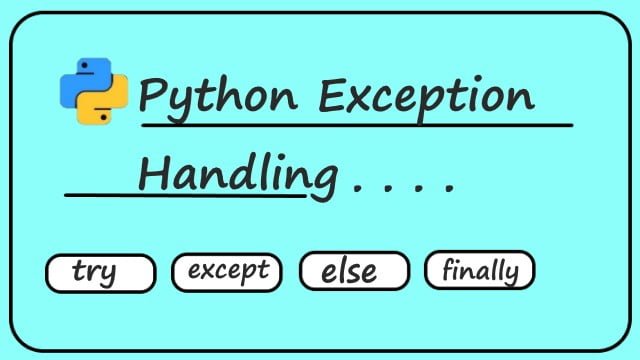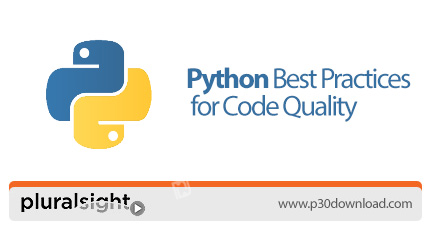Why Python is Perfect for Beginners
Python is an ideal programming language for beginners for several reasons. First, its syntax is simple and easy to understand, making it less intimidating for those new to coding. Python’s readability allows learners to focus on the logic and structure of their programs without getting bogged down in complex syntax rules.
Second, Python is highly versatile. It can be used for various applications, from web development and data analysis to artificial intelligence and machine learning. This versatility makes Python a valuable tool for beginners, as they can explore different areas of interest and discover their programming niche.
Moreover, Python has a supportive and active community. There are numerous resources available for beginners, including online courses, tutorials, forums, and documentation. This community support ensures that beginners can find help and guidance when they encounter challenges or have questions about Python programming.
Finally, learning Python as a first programming language or as a tool to enhance existing programming skills can open up new career opportunities. Python is in high demand in many industries, such as finance, healthcare, and technology. By mastering Python, beginners can improve their employability and increase their earning potential.
In summary, Python is an excellent choice for beginners due to its simplicity, versatility, community support, and career opportunities. By diving into Python assignments for beginners, learners can develop a strong foundation in programming and set themselves up for long-term success.
Setting Up Your Python Environment
Before diving into Python assignments for beginners, it’s essential to set up your Python environment correctly. Here’s a step-by-step guide on how to do this on different operating systems:
Installing Python
First, you need to install Python on your computer. Visit the official Python website and download the latest version of Python that matches your operating system. Follow the installation instructions, ensuring that you check the box that adds Python to your PATH.
Setting Up an Integrated Development Environment (IDE)
An IDE is a software application that provides comprehensive facilities for computer programming. For beginners, we recommend using either Visual Studio Code or PyCharm Community Edition. Both IDEs have excellent Python support and are easy to use.
Installing Essential Libraries
Python has a vast ecosystem of libraries that can help you with various tasks. For beginners, we recommend installing the following libraries:
- NumPy: A library for working with arrays and mathematical functions.
- Pandas: A library for working with data frames and time series data.
- Matplotlib: A library for data visualization.
- Seaborn: A library for statistical data visualization.
To install these libraries, you can use the pip package manager. Open your terminal or command prompt and type the following commands:
pip install numpy pandas matplotlib seaborn By following these steps, you’ll have a fully functional Python environment that’s ready for you to start exploring Python assignments for beginners.
Basic Python Concepts: Syntax and Semantics
Python is a high-level, interpreted programming language known for its simplicity and readability. To get started with Python assignments for beginners, it’s essential to understand the basic concepts of Python syntax and semantics. Here are some key concepts to master:
Variables
Variables are used to store data in Python. In Python, you don’t need to declare the data type of a variable explicitly. You can create a variable by simply assigning a value to it, like this:
x = 5 name = "John" Data Types
Python supports various data types, including integers, floating-point numbers, strings, and booleans. Here are some examples:
integer = 10 floating_point = 3.14 string = "Hello, World!" boolean = True Operators
Python supports various operators, including arithmetic, comparison, and logical operators. Here are some examples:
addition = 5 + 3 subtraction = 10 - 2 multiplication = 3 * 4 division = 10 / 2 modulus = 7 % 3 exponentiation = 2 ** 3 Control Flow
Control flow refers to the order in which code is executed. Python supports various control flow statements, including if-else statements, for loops, and while loops. Here are some examples:
if x > 0: print("x is positive") else: print("x is non-positive") for i in range(5): print(i) count = 0 while count < 5: print(count) count += 1 By mastering these basic Python concepts, you'll be well on your way to tackling more advanced Python assignments for beginners.
Diving Deeper: Functions, Modules, and Error Handling
As you become more comfortable with Python, it's time to explore some of its more advanced features. Here are some key concepts to master:
Functions
Functions are reusable blocks of code that perform a specific task. In Python, you can define your own functions using the def keyword. Here's an example:
def greet(name): print("Hello, " + name) greet("Alice") Modules
Modules are files that contain Python definitions and statements. By importing a module, you can use its functions, classes, and variables in your code. The Python Standard Library comes with a vast collection of built-in modules that you can use. Here's an example:
import math print(math.sqrt(16)) Error Handling
Error handling is an essential part of any programming language. In Python, you can use try-except blocks to catch and handle exceptions. Here's an example:
try: x = 1 / 0 except ZeroDivisionError: print("Cannot divide by zero") To practice these advanced Python concepts, here are some engaging assignments for beginners:
- Create a function that takes a list of numbers as input and returns the average.
- Write a module that contains a collection of math functions, such as
add(),subtract(), andmultiply(). - Create a program that asks the user for their name and age, and then prints a personalized message with their name and whether they are eligible to vote.
By mastering these advanced Python concepts, you'll be well on your way to becoming a proficient Python programmer.
Data Structures and Algorithms: Lists, Tuples, and Dictionaries
As you continue to learn Python, it's essential to understand the different data structures it offers. Lists, tuples, and dictionaries are fundamental data structures in Python that can help you solve real-world problems. Here's an overview of each data structure and how to use them:
Lists
Lists are ordered collections of items that can be of different data types. You can create a list by enclosing a comma-separated sequence of items in square brackets. Here's an example:
fruits = ["apple", "banana", "cherry"] Tuples
Tuples are similar to lists, but they are immutable, meaning you cannot change their contents once they are created. You can create a tuple by enclosing a comma-separated sequence of items in parentheses. Here's an example:
coordinates = (10, 20) D
File I/O and Data Visualization: Reading and Writing Data
As a Python beginner, you'll likely work with data at some point. Understanding how to read and write data to files is an essential skill. Additionally, data visualization is a powerful tool for analyzing and presenting data. Here are some key concepts and assignments to help you master file I/O and data visualization in Python:
File Input/Output (I/O) Operations
Python provides several functions for working with files, such as open(), read(), write(), and close(). Here's an example of how to read data from a file:
with open("data.txt", "r") as file: data = file.read() print(data) Data Visualization
Python has several libraries for data visualization, such as Matplotlib, Seaborn, and Plotly. Here's an example of how to create a bar chart using Matplotlib:
import matplotlib.pyplot as plt data = [5, 10, 15, 20, 25] labels = ["Apples", "Bananas", "Cherries", "Oranges", "Pears"] plt.bar(labels, data) plt.show() To practice file I/O and data visualization, here are some engaging assignments for beginners:
- Create a program that reads data from a file and calculates the average value.
- Write a program that generates a bar chart of the top 10 most popular names in a dataset.
- Create a program that reads data from a file and generates a scatter plot of two variables.
By mastering file I/O and data visualization, you'll be able to work with data in Python and present your findings in a clear and concise way.
Best Practices: Code Quality and Style
As a beginner, it's essential to learn good coding habits from the start. Writing clean, efficient, and well-documented code is crucial for long-term success in Python programming. Here are some best practices and resources to help you master code quality and style in Python:
PEP 8 Style Guidelines
PEP 8 is a set of style guidelines for writing Python code. It includes recommendations for indentation, line length, naming conventions, and more. Following PEP 8 will help you write code that is consistent, readable, and easy to understand. You can find the full guidelines here.
Version Control Systems
Version control systems, such as Git, allow you to track changes to your code and collaborate with other developers. Learning how to use version control systems is essential for any serious Python developer. You can find resources for learning Git here.
Code Documentation
Documenting your code is essential for ensuring that others can understand and use it. Good documentation includes comments that explain what each section of code does, as well as docstrings that describe functions and classes. You can find resources for learning how to document your code here.
Code Reviews
Code reviews are an essential part of the software development process. They allow other developers to review your code, provide feedback, and suggest improvements. Participating in code reviews will help you learn from others and improve your coding skills. You can find resources for learning how to conduct code reviews here.
To practice adopting best practices in Python programming, here are some engaging assignments for beginners:
- Refactor a piece of code to follow PEP 8 style guidelines.
- Write a program that uses Git for version control.
- Document a function or class with a docstring.
- Participate in a code review and provide constructive feedback.
By mastering best practices in Python programming, you'll be able to write code that is clean, efficient, and easy to understand. This will not only benefit you but also any collaborators or users of your code.
Conclusion: Continuous Learning and Exploration
Congratulations on completing this series of Python assignments for beginners! By now, you should have a solid foundation in Python programming, including key concepts, data structures, and best practices. But remember, learning Python is a continuous journey, and there's always more to explore.
To continue your learning journey, consider taking online courses or enrolling in a Python certification program. Websites like Coursera, Udemy, and edX offer a wide range of Python courses for all levels, from beginner to advanced. These courses often include interactive exercises, quizzes, and projects that can help you deepen your understanding of Python and prepare you for real-world programming scenarios.
In addition to online courses, there are many books available that can help you learn Python. Some popular choices for beginners include "Python Crash Course" by Eric Matthes, "Automate the Boring Stuff with Python" by Al Sweigart, and "Learning Python" by Mark Lutz. These books provide comprehensive introductions to Python programming, with clear explanations, examples, and exercises.
Another great way to continue learning and improving your Python skills is to participate in online communities and forums. Websites like Reddit, Stack Overflow, and GitHub have active Python communities where you can ask questions, share your progress, and collaborate with other learners. Participating in these communities can help you stay up-to-date with the latest Python trends, tools, and techniques, and can provide valuable feedback and support as you continue to learn and grow as a Python programmer.
In conclusion, learning Python is a rewarding and exciting journey, full of opportunities for growth, exploration, and creativity. By completing these Python assignments for beginners, you've taken an important first step on this journey. Keep practicing, keep learning, and keep exploring, and before you know it, you'll be a proficient Python programmer, ready to tackle any challenge that comes your way.








